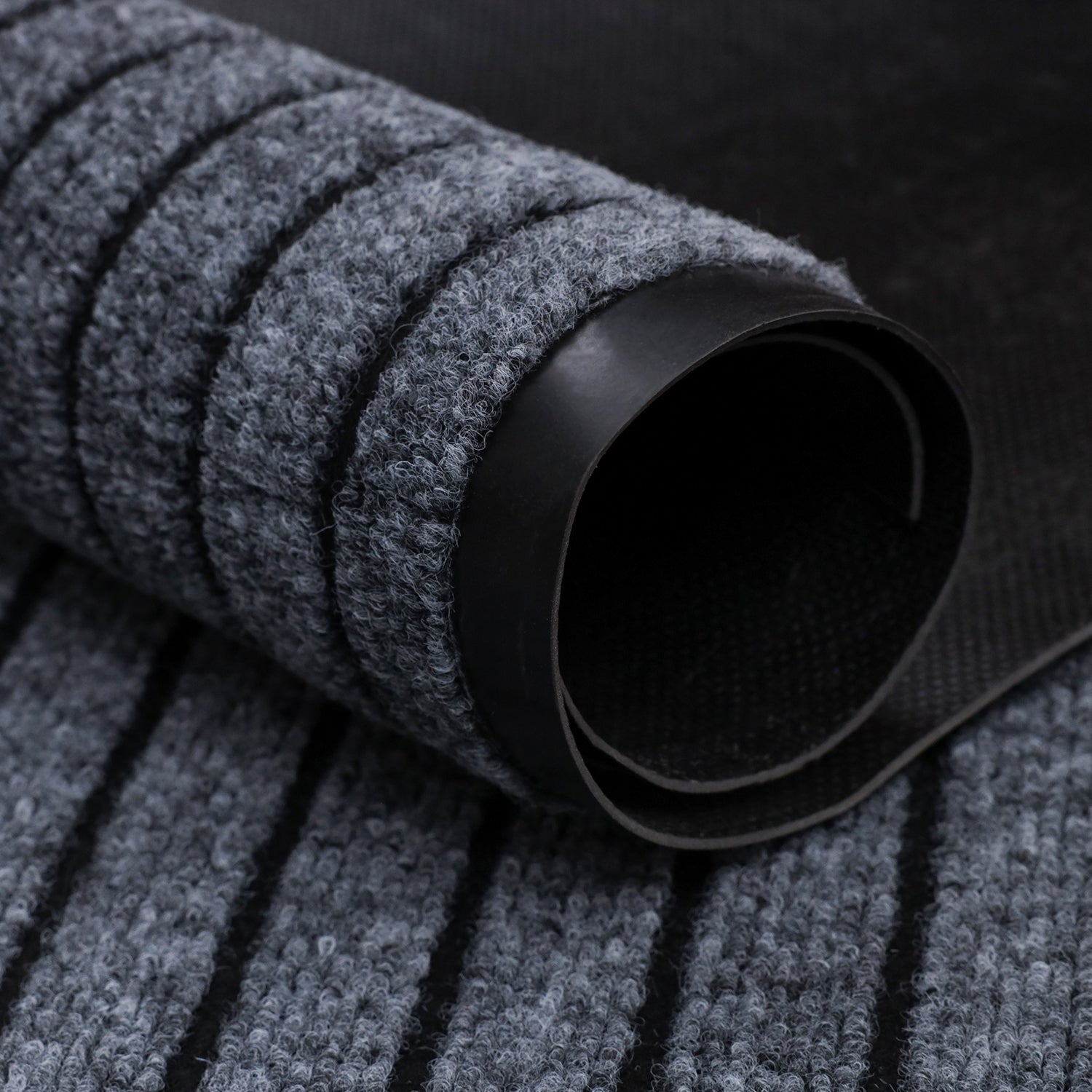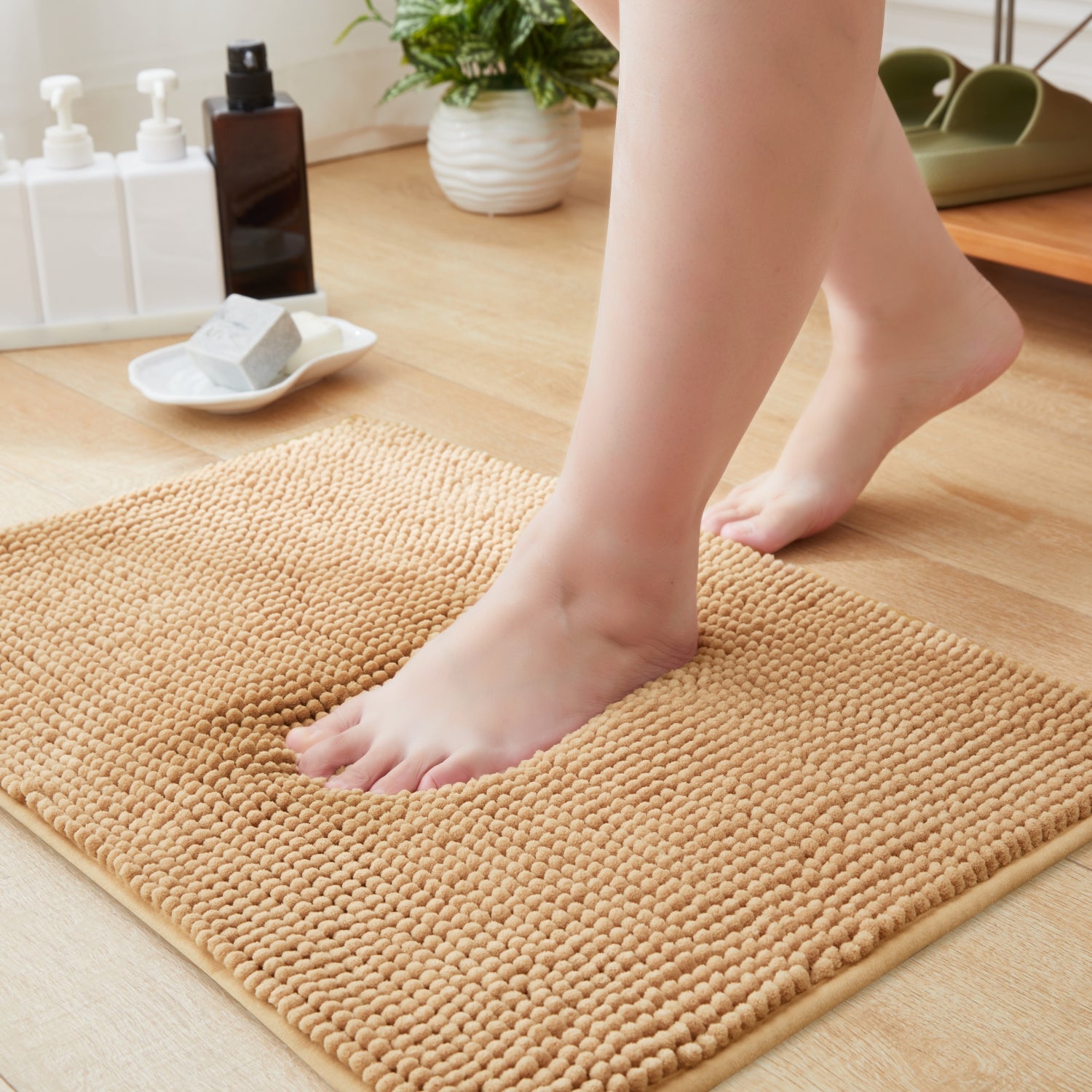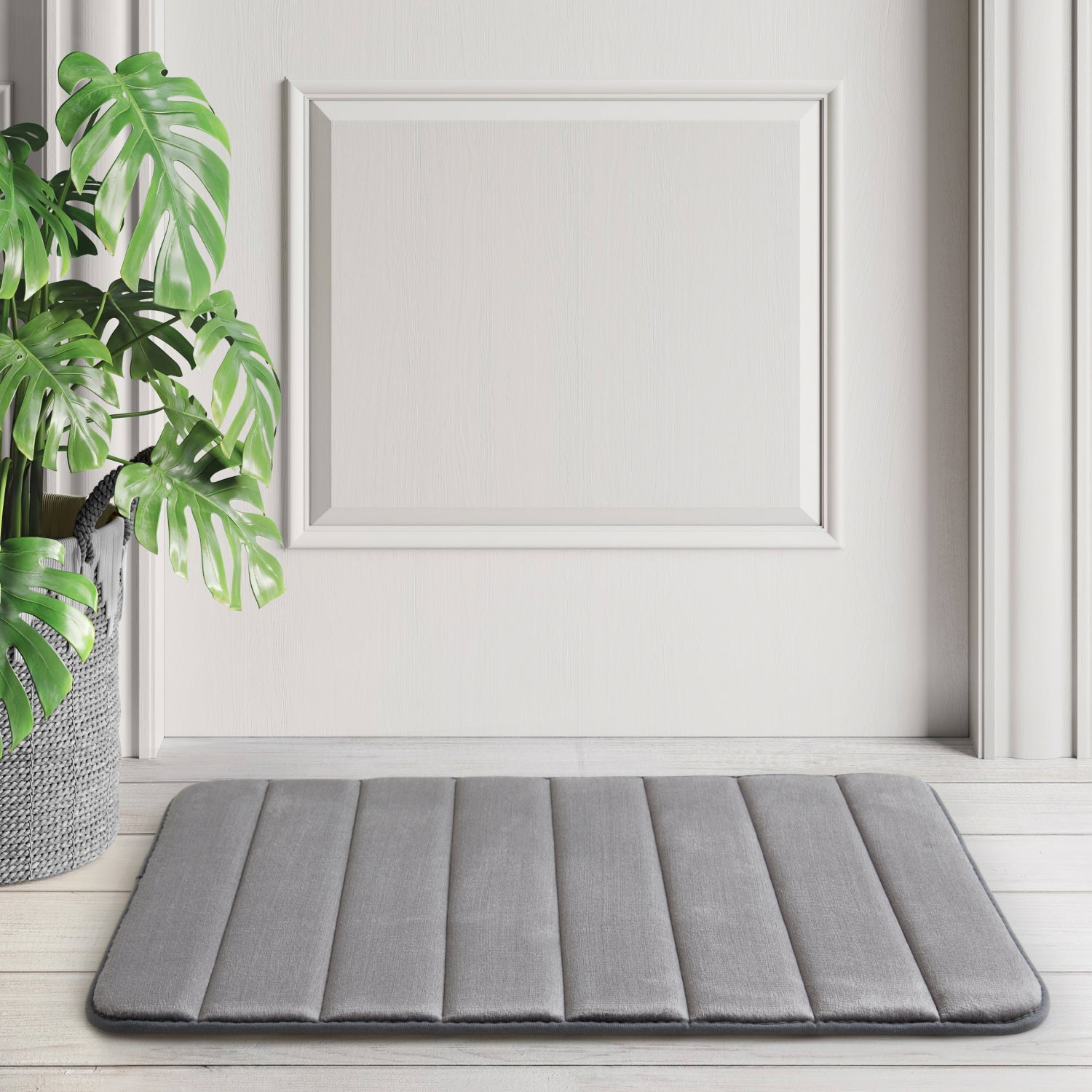How To Wash And Clean A Rubber Bath Mat?
Rubber bath mats are essential bathroom accessories that serve multiple purposes. They provide safety by preventing bathroom slips and falls, protecting your feet from cold and hard tile floors, and adding a decorative touch to the space. However, bath mats can accumulate dirt and grime over time and even develop mould and mildew. Proper cleaning and maintenance are crucial for ensuring their longevity and hygiene.
In this guide, we will explore the importance of maintaining a clean rubber bath mat and provide step-by-step instructions on how to clean it effectively.
Why is There a Need Of A Rubber Bath Mat In The Bathroom?
Rubber bath mats offer several benefits in the bathroom, including:
- 1: Safety: Rubber mats provide a non-slip surface, reducing the risk of accidents and injuries, especially in wet conditions.
- 2: Comfort: They provide a cushioned surface for your feet, making standing in the bathroom more comfortable.
- 3: Hygiene: Bath mats can trap dirt and moisture, preventing them from spreading throughout the bathroom.
- 4: Aesthetics: They come in various styles and colours, allowing you to enhance the visual appeal of your bathroom.

Rubber Bath Mats
Shop NowImportance Of Maintaining Hygiene In The Bathroom
Maintaining a clean bathroom is essential for overall hygiene and health. A dirty rubber bath mat can become a breeding ground for bacteria, mould, and mildew, leading to unpleasant odours and health issues. Regular cleaning helps prevent these problems and ensures a hygienic bathroom environment.
Are Rubber Mats Easy To Clean?
Yes, rubber bath mats are relatively easy to clean with the right approach and materials. Regular cleaning and proper maintenance can keep them in good condition for a long time.
Materials Needed
Before you begin cleaning your rubber bath mat, gather the following materials:
- ✅ Rubber bath mat
- ✅ Broom or vacuum cleaner
- ✅ Soft brush or cloth
- ✅ Mild soap or detergent
- ✅ White vinegar
- ✅ Bucket or basin
- ✅ Water
- ✅ Rubber gloves
- ✅ Stain-specific cleaning agents (for stubborn stains)
- ✅ Towels or a clothesline for drying
Preparing The Bath Mat
Remove The Bath Mat
Carefully lift the rubber bath mat from the bathroom floor.
Shaking Off Loose Dirt And Debris
Take the mat outside if possible and shake it vigorously to remove loose dirt, hair, and debris.
Inspecting The Mat For Any Signs Of Damage
Examine the mat for signs of wear, such as tears or cracks. If you find any, consider replacing it.

Non Slip Chenille Bath Mats
Shop NowBasic Cleaning
Remove Surface Dust And Hair
Use a soft brush or a vacuum cleaner with a brush attachment to remove any remaining surface dust and hair from the mat.
Creating A Soapy Cleaning Solution
Fill a bucket or basin with warm water and add a few drops of mild soap or detergent.
Scrubbing The Mat With A Soft Brush Or Cloth
Dip a soft brush or cloth into the soapy water and gently scrub the entire surface of the rubber bath mat. Pay special attention to any areas with visible dirt or stains.
Rinsing Off The Soap Thoroughly
Rinse the mat thoroughly with clean water to remove all soap residue. Make sure there are no soapy patches left.
Deep Cleaning
Addressing Mould And Mildew
- - Identifying mould and mildew spots: Mould and mildew can develop in damp areas of the rubber bath mat. Identify any discoloured or fuzzy spots as potential mould or mildew.
- - Preparing a vinegar solution: Mix equal parts of white vinegar and water in a separate container to create a vinegar solution.
- - Applying the solution to affected areas: Apply the vinegar to the mould or mildew spots using a soft brush or cloth. Let it sit for 10-15 minutes to allow the vinegar to penetrate and loosen the mould or mildew.
- - Scrubbing and rinsing: Gently scrub the affected areas with a brush or cloth to remove the mould or mildew. Rinse the mat thoroughly with clean water.
Tackling Stubborn Stains
1. Types Of Stains And Their Removal Methods
Different stains may require specific treatment:
- - Ink or dye stains: Rubbing alcohol or nail polish remover.
- - Oil or grease stains: Dish soap or degreaser.
- - Red wine or fruit juice stains: Hydrogen peroxide.
- - Mineral deposits: White vinegar.
- - Rust stains: Commercial rust remover.
2. Demonstrating Stain Removal Techniques
Apply the appropriate stain remover to the stained area, following the manufacturer's instructions. Scrub gently and rinse thoroughly.

Memory Foam Bath Mats
Shop NowDrying And Maintenance
Properly Drying The Rubber Bath Mat
Hang the mat on a clothesline or lay it flat in a well-ventilated area to dry completely. Avoid direct sunlight, as it can damage the rubber.
Preventing Future Mould And Mildew Growth
To prevent mould and mildew growth in the future, make sure the mat is completely dry before placing it back in the bathroom. Additionally, ensure proper ventilation in the bathroom to reduce humidity.
Storing The Bath Mat Correctly
Store the rubber bath mat in a dry area to prevent moisture buildup when not in use.
Tips And Tricks For Maintaining A Clean Bath Mat
- 1: Clean your bath mat regularly to prevent dirt and mould buildup.
- 2: Use a non-slip rug pad underneath the bath mat for added stability.
- 3: Avoid using abrasive cleaners or brushes that could damage the rubber surface.
- 4: If your bath mat has suction cups on the bottom, ensure they are clean and free of soap residue for maximum grip.
How Often To Clean Your Rubber Bath Mat?
Clean your rubber bath mat at least once a month and more frequently if it receives heavy use or is exposed to high humidity.
When To Consider Replacing The Bath Mat?
Replace your rubber bath mat if you notice signs of extensive damage, such as tears cracks, or if it no longer provides adequate slip resistance. Additionally, it may be time for a replacement if mould or mildew is deeply embedded and cannot be effectively cleaned.
Safety Precautions
Safe Handling Of Cleaning Chemicals
When using cleaning agents, wear rubber gloves to protect your skin. Follow the instructions on the labels of stain-specific cleaning products to ensure safe and effective use.
Avoiding Slips And Falls During The Cleaning Process
Exercise caution while cleaning the rubber bath mat, especially when using water and soap. Ensure the floor and your hands are dry to prevent slipping.
Conclusion
Maintaining a clean rubber bath mat is essential for a hygienic bathroom environment and the longevity of the mat. Regular cleaning, proper drying, and vigilant stain removal will keep your bath mat looking and performing its best. Following the steps and tips outlined in this guide, you can ensure a safe and comfortable bathroom experience for yourself and your family.
FAQs
Why do bath mats get dirty?
Bath mats get dirty due to the accumulation of dirt, moisture, soap scum, and skin oils from regular use. In addition, they can develop mould and mildew in humid environments.
Can I put my rubber bath mat in the washing machine?
Placing a rubber bath mat in the washing machine is generally not recommended, as the machine's agitator can damage the mat. It's best to clean it manually, following the steps mentioned in this guide.
Can you wash bath mats with vinegar?
Yes, you can use a vinegar solution to clean bath mats, primarily to address mould, mildew, and mineral deposits. The vinegar's acidity helps break down these contaminants.
How do you make rubber mats shine?
To make rubber mats shine, clean them thoroughly using the steps in this guide. After cleaning, apply a rubber or vinyl protectant to enhance their shine and protect against future stains and damage. Follow the manufacturer's instructions for the specific product you use.






